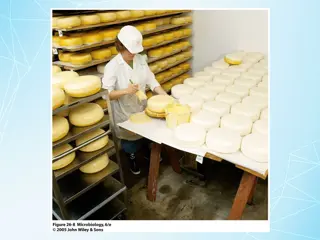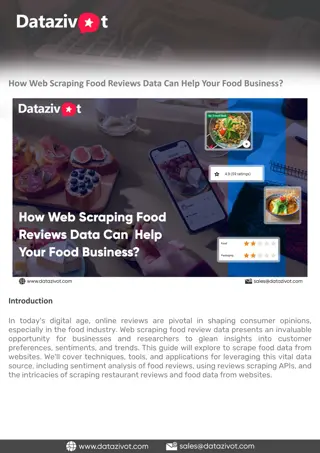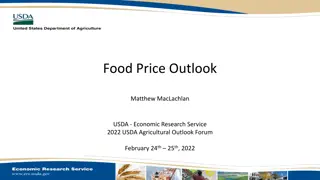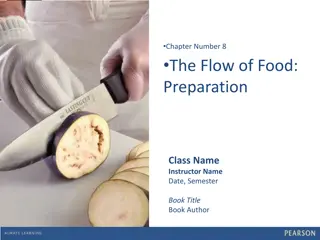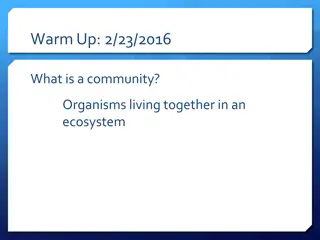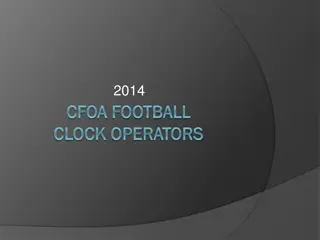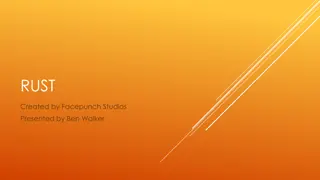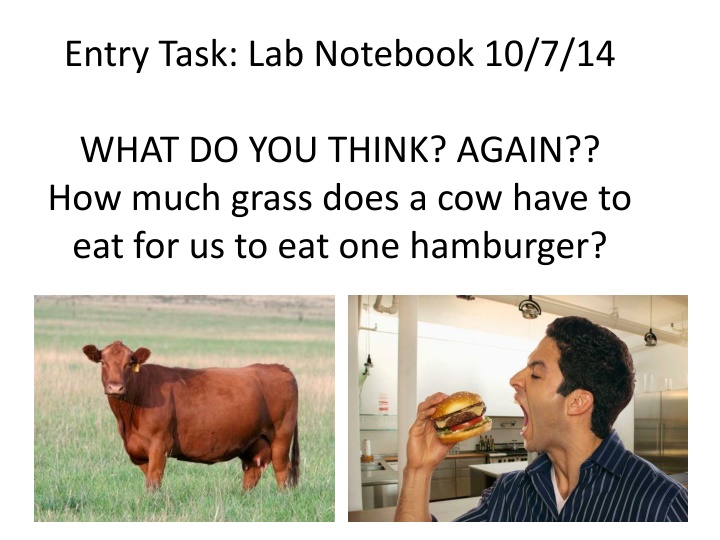
Food Chains and Energy Flow in Ecosystems
Delve into the intricate relationships within food chains, exploring the amount of biomass required at each level for sustaining different species. Learn about carrying capacity, energy flow, and vocabulary related to ecosystems. Engage in hands-on tasks and analyses to grasp these concepts effectively.
Download Presentation

Please find below an Image/Link to download the presentation.
The content on the website is provided AS IS for your information and personal use only. It may not be sold, licensed, or shared on other websites without obtaining consent from the author. If you encounter any issues during the download, it is possible that the publisher has removed the file from their server.
You are allowed to download the files provided on this website for personal or commercial use, subject to the condition that they are used lawfully. All files are the property of their respective owners.
The content on the website is provided AS IS for your information and personal use only. It may not be sold, licensed, or shared on other websites without obtaining consent from the author.
E N D
Presentation Transcript
Entry Task: Lab Notebook 10/7/14 WHAT DO YOU THINK? AGAIN?? How much grass does a cow have to eat for us to eat one hamburger?
Great Salt Lake Food Chain Avocet N. Harrier Halobacteria Brine Shrimp Length: 5 m 1cm 50 cm 40 cm
Data!! What is the total mass of Halobacteria needed to feed one kilogram of Northern Harrier? 10 kg Halo = 1 kg Brine Shrimp 10 kg Brine Shrimp 10 kg Halo x 10 kg Brine Shrimp = 100 kg Halo 100 kg Halo = 10 kg Brine Shrimp = 1 kg Avocet 100 kg Halo x 10 kg Avocet = 1000 kg Halobacteria!! So 1000 kg Halobacteria = 1 kg Northern Harrier
The Results #1 #2 #3 #4 #5 #6 #7 #8 Avg Halobacteria Brine Shrimp Avocet N. Harrier
Debriefing the Game Did this game take longer than you thought to move up to each level? Why? Why not? How difficult was it to get to the Northern Harrier level? Why? Why did we have to stop the game ? What does that do to the rest of the food chain? This is called Carrying Capacity and we ll talk more about this in a later lesson.
How much energy moves up each level? Not much. Why? Movement Maintenance Waste Growth and Reproduction
Vocabulary Words Turn to your vocabulary section of your journal and add these words and the first few definitions. Word Definition Food Chain A single part of a food web. Anything that takes up space and has mass. (solid, liquid, gas phases) Matter The ability for something to do work. (kinetic, potential, chemical, electrical energy types) Energy How much living matter there is in a place. Biomass
Exit Ticket Complete your Analysis Questions before you leave. Turn it in to the box when you are done.
The Results P1 #1 #2 #3 #4 #5 #6 #7 #8 Avg Halobacteria 690 650 350 650 593 520 200 522 Brine Shrimp 69 65 35 70 54 50 20 52 Avocet 6 6 3 5 5 5 2 5 N. Harrier 0 0 0 0 0 0 0 0
The Results P2 #1 #2 #3 #4 #5 #6 #7 #8 Avg Halobacteria 800 700 700 300 700 300 200 529 Brine Shrimp 80 70 70 30 70 30 20 53 Avocet 8 7 7 3 7 3 2 5 N. Harrier 0 0 0 0 0 0 0 0
The Results P3 #1 #2 #3 #4 #5 #6 #7 #8 Avg Halobacteria 820 1100 1700 450 1600 1000 700 140 939 Brine Shrimp 82 110 171 45 160 100 70 14 94 Avocet 8 10 17 4 16 10 7 1 9 N. Harrier 0 1 1 0 1 1 0 0 1
The Results P4 #1 #2 #3 #4 Average Halobacteria 1280 300 1000 500 770 Brine Shrimp 128 30 100 50 77 Avocet 12 3 10 5 8 N. Harrier 1 0 1 0 1
The Results P5 #1 #2 #3 #4 #5 #6 #7 #8 Avg Halobacteria 700 820 700 600 1000 1720 1320 980 Brine Shrimp 70 82 70 60 100 172 132 98 Avocet 7 8 7 6 10 17 13 10 N. Harrier 0 0 0 0 1 1 1 0

